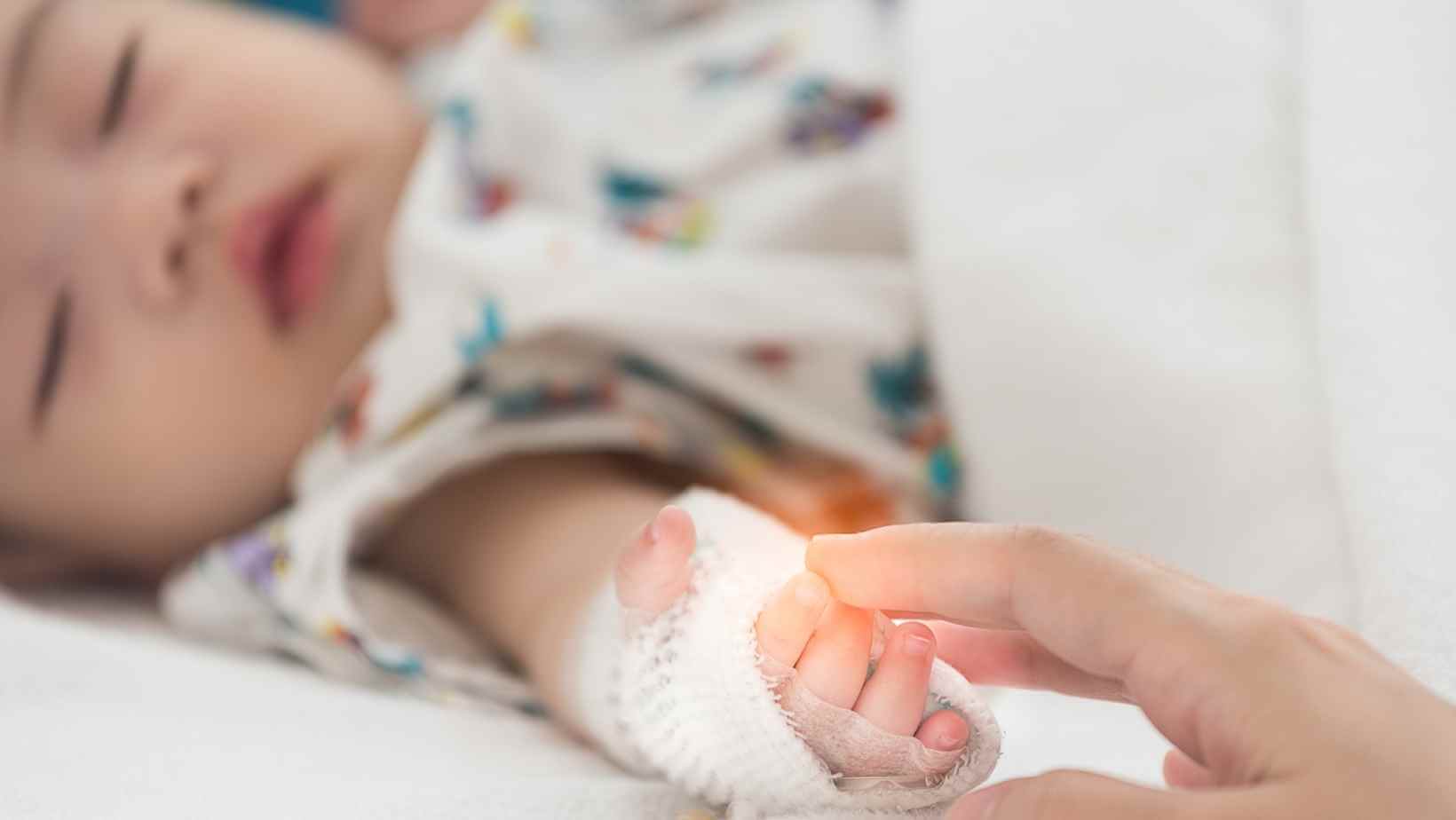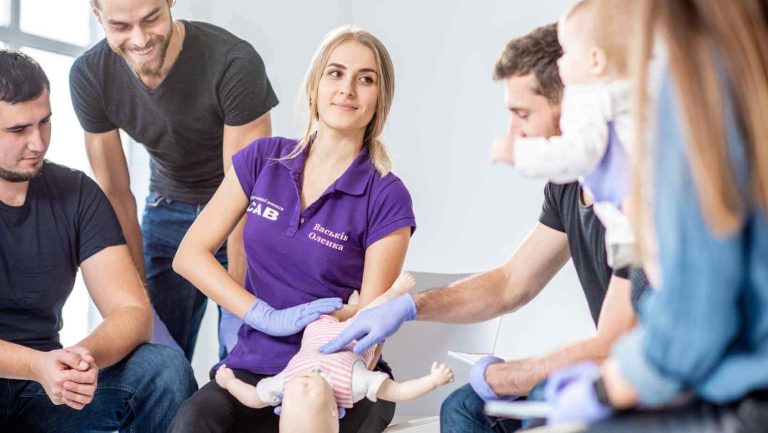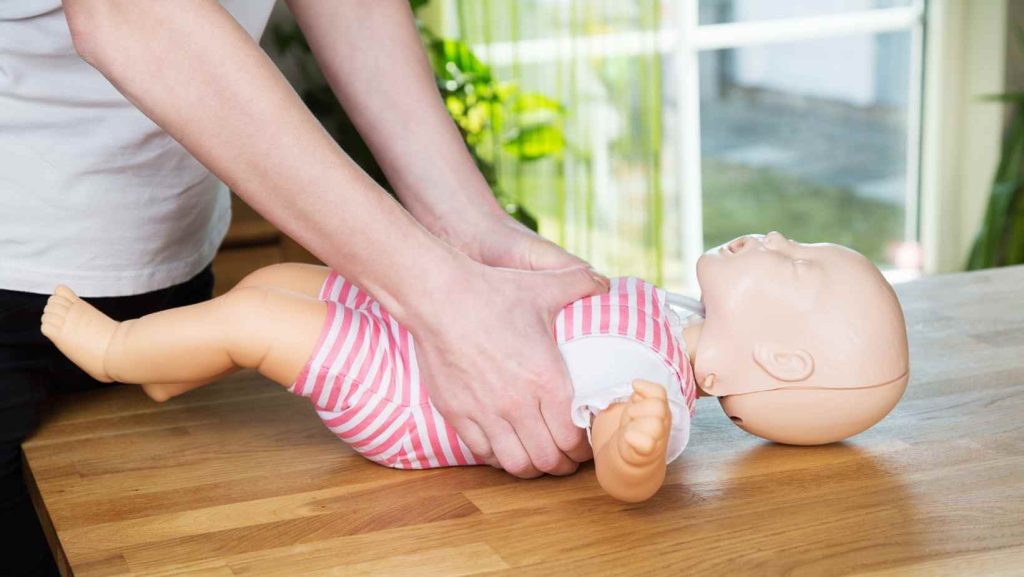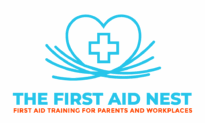How To Do CPR On A Baby

In a first aid class, you will learn how to perform cardiopulmonary resuscitation (CPR) on adults, children and perhaps most important, CPR on a baby.
An infant is defined as a baby under 12 months old.
CPR on an infant is not vastly different to CPR on an adult, but there are some very important differences.
Going back to basics, we need to decide if CPR is actually needed. Here is a summary of the actions we need to take:
- Is the child breathing or breathing normally?
- NO? Call an ambulance
- Commence CPR on the floor
- Give 30 chest compressions
- Give 2 rescue breaths (if able and trained)
- If you do not/can’t give rescue breaths, give continuous chest compressions
- Repeat until an ambulance arrives or the child recovers
First Aid Training
Babies can be difficult to assess. A child can’t often tell you how they are feeling or if there is something wrong. This can make an emergency with a very young child, even more, confronting, which is why it is so important to know what to do.
Following the DRSABCD action plan, gives us a framework to follow:
DRSABCD Action Plan
Danger
If you find your baby unresponsive, you must first scan for any danger.
Examples of dangers would be:
- Have they been electrocuted?
- Have they slipped and fallen on fluid?
- Are they under an object that has fallen?
Remove the baby from any imminent danger if it is safe to do so. If not, call emergency services.
Response
Check for a response:
- Hold the baby by the shoulders
- Give them a gentle shake, just at the shoulders
- Call their name
Is there a response? If not, continue to send for help. If there is a response, place the baby in the recovery position either in your arms or on the floor, making sure to keep their airway open and send for help if appropriate.
Send for help
Call an ambulance and also call for local help from a neighbour or anyone in the house. It always helps to have more people at the scene to help and assist.

Airway
Check the airway for a foreign body or fluid/vomit.
- Place the baby’s airway in a neutral position. Do not tilt the head backwards
- Check the airway for any foreign objects or fluid.
- If there is fluid or vomit, roll the baby on their side and let the fluid drain out. You can help drain the fluid with your finger just inside the lips.
- If there is a foreign object inside the mouth that is sticking out or is easily ‘pinchable’, then you can reach in and try to remove it. DO NOT try this if you cant easily get hold of the object with your thumb and forefinger or if the object is right at the back of the throat.
- If there is nothing to see inside the mouth, proceed to check the breathing
Breathing?
Look ~ Listen ~ Feel
Place your head down so that your cheek is next to the mouth and you are looking down towards the toes
- Look for chest rise
- Listen for breath sounds
- Feel for any breath on your cheek
If the baby is breathing, place them in the recovery position in your arms or on the floor and await for the ambulance to arrive. Constantly keep an eye on their breathing. If at anytime they stop breathing normally or at all, start CPR.

CPR On a Baby
Never perform CPR on a soft surface. The baby should be on a hard surface, preferable the floor, and you should be up on your knees.
Place 2 fingers in the centre of the chest between the nipples and start with 30 chest compressions. You should achieve ⅓ of the depth of the chest.
Once you have completed the compressions, go straight to the rescue breaths.
A baby’s airway is more pliable than an older child’s. This means that if a baby’s head is bent too far back, the airway could kink. Always make sure a baby’s head is in a neutral position.
Rescue Breaths
When giving rescue breaths to a baby, you must either:
- Create a good seal with your mouth around their mouth and nose
Or
- Pinch the nose and create a good seal around their mouth
For a baby, you would only need to blow for 1-2 seconds. The contents of your cheeks are usually enough to inflate the lungs.
Continue with 30 chest compressions and 2 rescue breaths continuously until help arrives, the baby recovers or you become physically exhausted.
Want more? We’ve got you covered…
Our Baby First Aid Courses
Our baby first aid courses are available in person in your home and online. We run classes in your home with groups of 2, 4 or up to 10 in Sydney & Melbourne and you can book in 3 easy steps!
- Pick your class
- Follow the prompts to purchase
- We will contact you within 24 hours to lock in your date of choice
Our First Aid Certificate Courses
We run most of the popular first aid courses Australia wide. HLTAID011 Provide First Aid, HLTAID009 Provide CPR, HLTAID012 Provide First Aid in an Education & Care Setting, RAMOAP (anaphylaxis), Mental Health first aid and CPR/LVR to name a few.
Book your public spot online or contact us if you have a group of 5+ people for onsite training.
Here are some other resources you may enjoy!
FREE GUIDE: Your Virtual Baby First Aid Kit
FREE GUIDE: Introducing Common Allergy Foods & Allergic Reactions
FREE Workplace Emergency Preparedness Plan: Grab this at the bottom of every page!
Follow for baby & child first aid and allergy info and tips on Instagram, TikTok & Facebook all @thenestcpr
